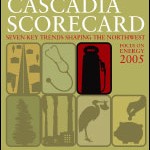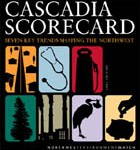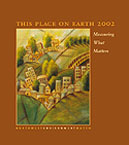Search Results
All Results
-
Free Parking: Nun Such Thing
So what, exactly, do nuns drive? Don’t search for the punchline; it’s an important question raised by Governing Magazine‘s Alan Ehrenhalt in his recent, useful recap of Donald Shoup’s The High Cost of Free Parking: How many parking spaces should a convent be legally required to provide? If you immediately answered “zero,” then you probably have some common sense. Parking at a convent shouldn’t be a zoning question. Shoup condemns...Read more » -
Cascadia Scorecard 2005
The 2005 Scorecard gives a concise update on how Cascadia ranks in seven key trends, with a focus on one of the most critical issues facing the region: energy. It details the weaknesses of the region’s energy system and argues that Cascadia can achieve true security, and a stronger economy, by investing in a clean-energy revolution that is already gathering force.Read more » -
More Profits, Less Energy
A host of studies, along with years of Cascadian experience, show that the most promising-and environmentally sound-new “source” of energy is energy efficiency. But investments in efficiency are often beyond the reach, knowledge, or time horizon of residential consumers and businesses. Only the deep pockets that finance the energy infrastructure-especially electric and natural gas utilities-can seize the full potential of efficiency. Some Northwest utilities, such as Seattle City Light, are...Read more » -
A Picture is Worth a Thousand Reports
Last week brought a Bush administration report on climate change indicating a possible shift in the president’s position on the role of human activity in global warming (this is according to the media; the administration denied such a shift). I wonder if Bush was influenced by the nation’s best picture book, National Geographic, which devoted this month’s cover story to global warming. The issue’s stunning photos illustrate climate change’s many...Read more » -
Cascadia Scorecard 2004
Each minute in 2003 northwesterners cut one acre of the region’s forest. Every four minutes the Northwest’s population increased by one. Every 20 minutes, the population of poor northwesterners grew by one. These are small changes, but-as Cascadia Scorecard shows-over decades, such trends transform the region more dramatically than the fleeting headlines that so often makes front-page news.Read more » -
This Place On Earth 2002
If we don’t measure what we value, we’ll end up valuing what we measure. This Place on Earth 2002 takes a close look at why society’s most-influential indicators—from the GDP to the Dow Jones—are failing us. It also presents a first effort at an alternative yardstick for the Northwest, by measuring how the region is doing in critical areas such as salmon health, sprawl, income inequality, and land use.Read more »





